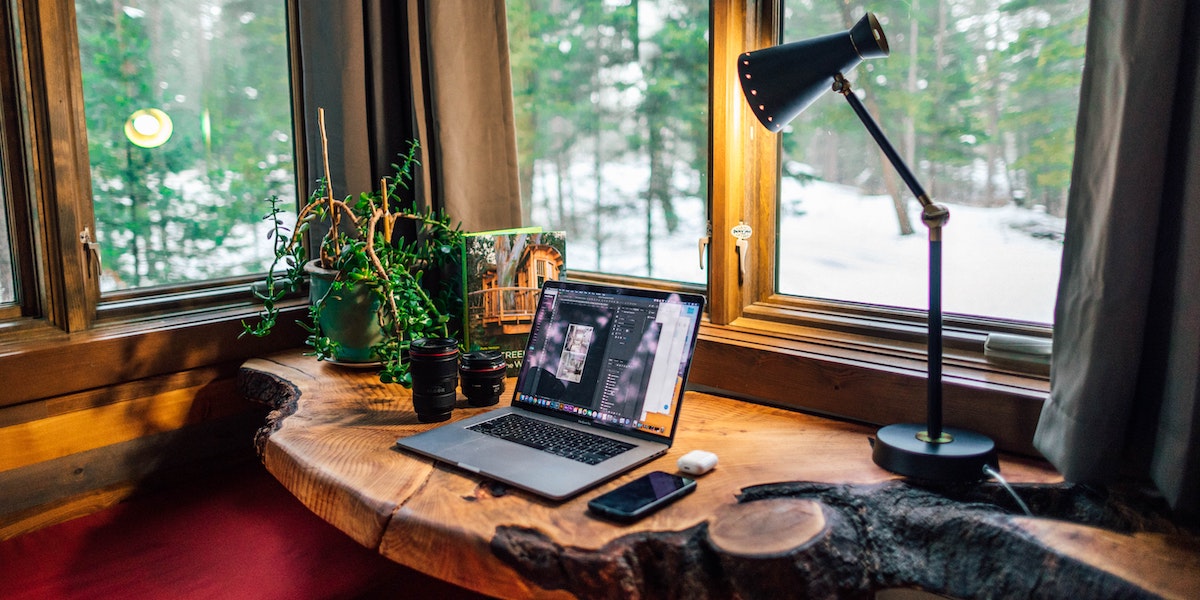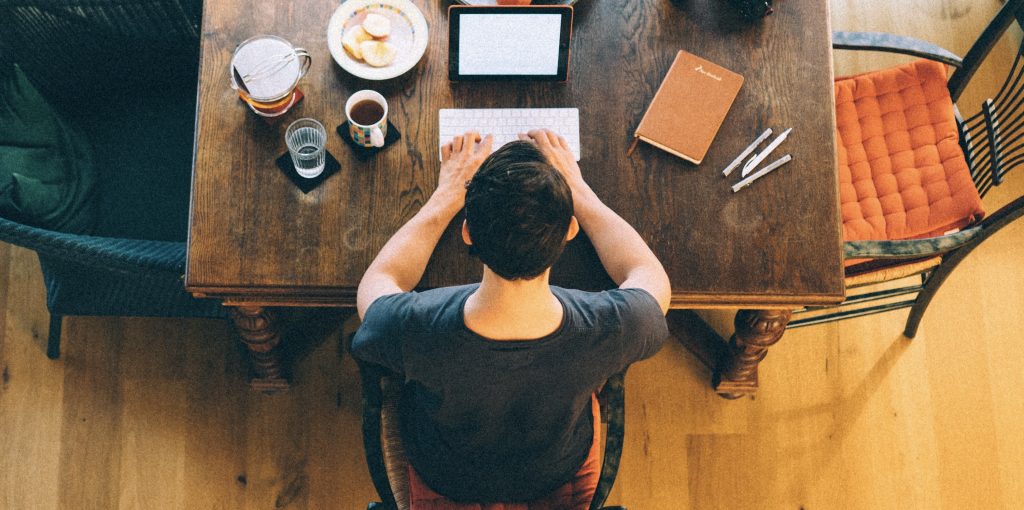Ingrid Fetell Lee is a former design director at IDEO and the author of Joyful: The Surprising Power of Ordinary Things to Create Extraordinary Happiness. Her groundbreaking work reveals the hidden influence of our surroundings on our emotions and well-being, and her TED talk “Where Joy Hides and How to Find It” has been viewed more than 17 million times.
Ingrid recently joined Rufus Griscom on the Next Big Idea podcast to discuss finding joy during a crisis, and how our home offices can bring out our best, most productive selves.
Rufus: You’ve been hearing from so many people who are craving joy and hope right now. What have you been telling them?
Ingrid: Right now I think it’s important for people to recognize that happiness and joy are different things. Happiness is a broad evaluation of how we feel about our lives over time, so it involves lots of factors—how we feel about our health, our work, our connection to other people, and whether we have meaning and purpose in our lives. And all of those things are being challenged right now, so it’s natural that we wouldn’t be happy in a difficult moment like this.
But joy is much simpler and more immediate; psychologists define it as an intense, momentary experience of positive emotion. And those moments of joy are still available to us, even in difficult times. We don’t need to be happy to find it. We can feel the depth of our sadness and anxiety and frustration, and still find those small moments of joy.
Rufus: I love this phrase that you coined, “the aesthetics of joy.” I’m sure that one response you’ve fought to some degree is that it sounds frivolous, right? That what we hang on the wall next to our desk doesn’t really matter—you would disagree with that.
Ingrid: Absolutely. I think we tend to see the physical world, the material world, as trivial to our happiness and well-being. But so many small moments of joy come from interactions with the physical world, whether it’s the trees beginning to bud again, or just the way the light comes into your home. We think about aesthetics like color, light, pattern, and texture as decorative, but in fact, they’re the foundation of our experience of the world. And if we can find joy in those ways, why wouldn’t we take advantage of it? Why wouldn’t we allow ourselves that?
Rufus: So when you think about the ways we can employ the aesthetics of joy in this quarantine environment that we’re all in, how would you recommend doing that?
Ingrid: One of the things you can do is to move things around in your home, just to bring in a little freshness. Maybe that’s switching art pieces from one space to another, or moving throw pillows or blankets—just creating a bit of motion through the home so that things don’t feel so static.
Also, a lot of us are glued to the news, spending a lot of time stress scrolling, so invite play back into your home. Take a break to play a game, for example. One of the things that has been an unexpected joy in our home has been a giant pink yoga ball. (We ordered it because my doula suggested it for labor.) I can’t work on it because it’s not the right height to sit on, but I take breaks on it—and I just bounce. It’s not something that necessarily belongs with our decor, but it’s such a joyful thing to have this exercise ball in the middle of the living room.
Also, try bringing greenery into your space. You could get some flowers as part of your trip to get groceries, or procure a new houseplant. Having some greenery around can really soften the hard edges of a space, and bring in some of the benefits of nature, which can be profound. You can also do that through scent and through sound—the sound of birds singing, I think, is a great soundtrack for these times. It’s calming in a very unconscious way—it sets our minds at ease because it creates a sense of safety: “If the birds are singing, then things must be okay.”
Rufus: How about creating a sensory landscape?
Ingrid: So when I think about working from home, one of the benefits I see is that many offices are really poorly designed for our well-being—they don’t have a lot of the things that make us feel good. And there’s some really interesting research about people who are working in so-called “lean” work environments—like the minimalist, gray cubes that many of us are familiar with. When they’re compared with people working in enriched environments—which have art, plants, and a bit more stimulation—the people in enriched environments were actually 15% more productive.
“We can feel the depth of our sadness and anxiety and frustration, and still find those small moments of joy.”
This is really striking to me, because offices are designed to minimize environmental distractions that take us out of our work. But in fact, there is a monotony that kind of lulls us into a stupor. We spend too much time just staring at our computers, and we’re not stimulating our other senses. We have these remarkably sensitive fingertips that can sense the width of a human hair in terms of the difference in materials. Our hearing, our kinesthetic senses, our sense of smell—all of these senses are just idle while we’re working, so it’s no wonder that they get a little bored.
And so when you’re working from home, if you have the ability to create more of a sensory landscape for yourself, it doesn’t distract you from your work—it can actually help keep you engaged. And I think—this is purely conjecture on my part—that it can keep you from running to the fridge for snacks all the time. Because I think that sometimes what we’re craving is not necessarily food, but sensorial stimulation. We’re not hungry in the physical sense—we’re hungry for something that stimulates these other senses that are just sitting there. So if we can give ourselves a little more stimulation, it can help keep our minds and bodies satiated while we’re getting things done.
Rufus: So we create this sensory landscape by introducing sights, smells, plants…?
Ingrid: Yeah, absolutely. Think about distance vision—give your eyes somewhere further away to focus on when you take breaks from your screen. Essential oils or a scented candle can be helpful, plus ambient sounds that sound good to you. Also think about textures—while I’m working, I cover my chair with a sheepskin because it’s so soft. Just think about what your senses want to be exposed to, and give yourself a little bit of it.
This excerpt has been edited and condensed. Listen to the full conversation on the Next Big Idea podcast.


























